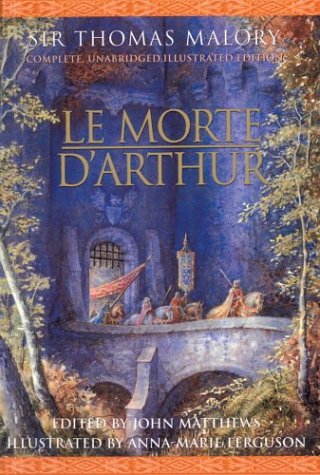|
Guinevere (also Gwenhwyfar, Gwenivar, Guenevere or Guenever) is the the wife of King Arthur. She was first introduced to Arthurian legend by Geoffrey of Monmouth in Historia Regum Britanniae. In most Arthurian legend, Arthur and Guinevere never have any children.
The 12th century poem Lancelot, the Knight of the Cart by Chrétien de Troyes, introduced the story in which Guinevere falls for Lancelot, Arthur's supreme knight and best friend. It became canon, most notably in Sir Thomas Malory's Le Morte d'Arthur. The love triangle story was the focus of the 1960 Broadway musical Camelot. |
 |
|
She is the daughter of King Leodegrance in French chivalric romances and later works based on them, most notably Le Morte d'Arthur. Her father served Arthur's father, Uther Pendragon. It is a common part of Arthurian legend that King Leodegrance gives Arthur the famous round table as a wedding present.
In the Otter and Arthur series, Guinevere is introduced briefly in the first book, Otter and Arthur and the Sword in the Stone, and emerges as a strong female character in the second book, Otter and Arthur and the Round Table. |
|
Resources:
|












